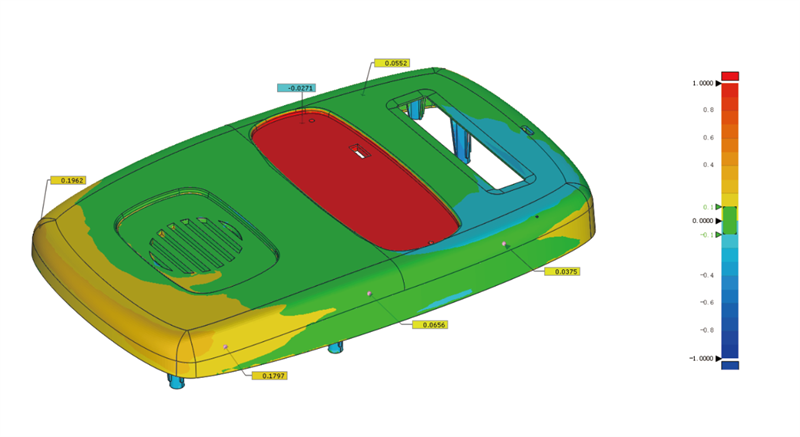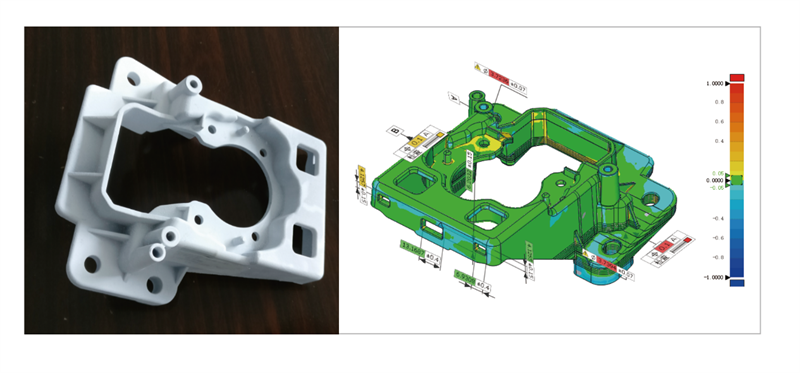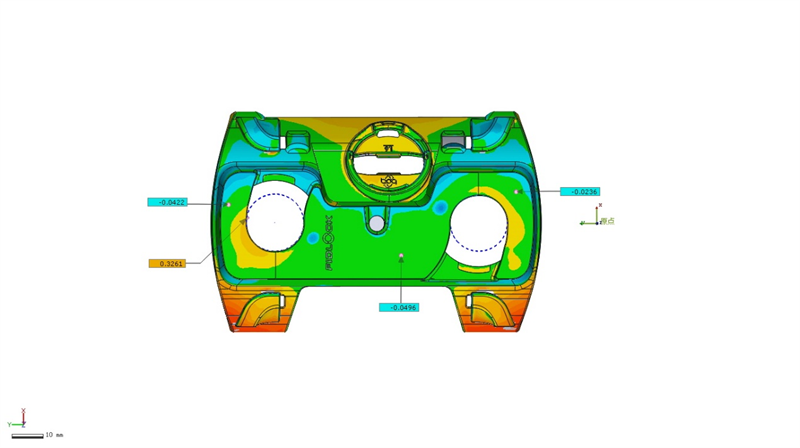CAV full-size detection
In order to meet consumers' demand for product performance and appearance, manufacturing engineers have designed and manufactured many surfaces with high precision and complex shapes, such as Class A surfaces. At the same time, the curved surface challenges the traditional inspection tools (low detection accuracy), especially when measuring the curved surface size that can't meet the actual requirements of time and operability. The existing contact inspection methods meet the requirements of various materials, and need alternative dimensional inspection solutions.
principle of operation
CAV (Computer Aided Verification) comprehensive inspection, also known as global inspection, is especially suitable for 3D inspection of parts with many free-form surfaces and complex product structures. Using 3D scanner and professional 3D inspection software, scan the parts to be inspected locally or omni-directionally, compare the acquired accurate point cloud data with the CAD files of the original design, and compare the color error codes. Intuitively generate the created map. The inspection report helps to quickly and effectively distinguish the errors between parts and CAD and other analysis.
Program value
1. Reduce human error.
Direct measurement of CAD data can minimize human error and speed up the size adjustment process.
2. Improve production efficiency
Professional inspection software makes multi-part inspection as easy as single-part inspection, and the software will automatically repeat the whole inspection process.
3. The detection is more flexible
Every parameter of the test is recorded in the tree, so if any step in the test program changes, the test software will automatically update all relevant steps.
application area
Automobile ship
aerospace
consumer electronics
die making
Reverse engineering
With the popularization of computer technology in manufacturing field, especially the rapid development of digital measurement technology, product modeling technology based on measurement data has become the focus of reverse engineering technology. The spatial data of the object surface obtained by digital measuring equipment (3D scanner, coordinate measuring machine, laser measuring equipment, etc.) uses reverse engineering technology to establish 3D model of products, CAM, 3D printing, etc. The manufactured system equipment must be used to complete the product. Therefore, reverse engineering technology can be regarded as the general name of digital technology and geometric modeling technology related to converting product samples into 3D models.
principle of operation
Reverse engineering (RE) is the process of reproducing product design technology, that is, reverse analysis and investigation of the target product, in order to estimate and deduce the design of product processing flow, organizational structure, functional characteristics and technical specifications. Elements of producing products with similar functions but not identical ones.
Program value
Damaged or worn parts
Copy existing parts to reproduce the design intent of the original product.
Design is mainly used to change products and duplicate new parts designed.
Digital model inspection and model comparison, such as product deformation analysis and welding quality.
application area
1. Mold sample development
Quick samples of cars, motorcycles, household appliances, sporting goods, toys, ceramics, etc.
2. Rapid prototyping
Antiques, portraits, works of art, cartoon characters, toys, etc.
3. Body shape measurement
Body shape measurement, medical equipment manufacturing, etc.
4. Styling design
3D animation, multimedia virtual reality, advertising animation, etc.








